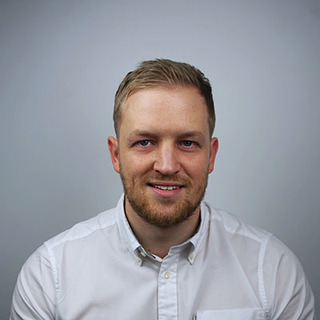“The world is now changing at a rate at which the basic systems, structures, and cultures built over the past century cannot keep up with the demands being placed on them.” – John P Kotter
The ongoing pandemic continues to reinforce the case for agility in business practices and transformation programmes, ushering in a ‘new normal’ and creating significant disruption for insurance businesses. Could an Agile approach help insurance companies respond more effectively?
The insurance industry was experiencing considerable disruption even ahead of COVID-19. Customers have become more complex; there has been significant product innovation as customers have demanded more nuanced solutions. Much of the insurance industry is still reliant on manual processes, and digital transformation has become an imperative as tech-savvy challengers eye the sector with interest. Add COVID-19 into the mix and it is an opportune moment for a change in approach.
Waterfall versus Agile
To date, the insurance industry has made only light use of Agile project management, but in this new environment, it could be a means to deliver more successful transformation projects. A recent report by The Standish Group shows that agile projects tend to be more successful and have lower failure rates than waterfall projects.
Waterfall projects have clear stages of requirements, design, development, testing and deployment, but the rewards are all delivered at the end of the process, meaning the end date and costs can be extremely variable. In contrast, an agile project instead moves forward incrementally, building up value as the project moves forward, while constantly reviewing achievements to date. The rewards are delivered through the project, and the project managers learn and adapt throughout. As such, it is a means to respond more effectively to uncertainty.
So, while Agile is not without its challenges, there is evidence that when its principles are properly implemented, they can drive and sustain organisational change and operational excellence by empowering individuals and teams to reach their highest potential.
The SAFe Agile framework
‘Agile’ is an umbrella term for a number of frameworks and methodologies which apply the values and principles of the ‘Agile Manifesto’. It includes lightweight frameworks such as Scrum and Kanban, and fuller frameworks such as SAFe and ‘Scrum of Scrums’.
The Agile Manifesto is a set of 12 core principles and is designed to be truly cross-functional, with business teams and developers working together in a spirit of collaboration and empathy. A key point about this approach is that it is evidence-based, and as such, more likely to deliver the right solutions at the end of the project. Equally, incremental product delivery avoids the tyranny of the waterfall delivery process, where costs and hours mount in the final weeks before delivery. Instead, costs and time are consistent.
The ‘essential’ SAFe Agile framework is the starting point for most organisations, with the latest update including team and programme guidelines. Everything in SAFe is executed within time boxes – a sprint is 10 days, and a programme increment (PI) is five sprints. Up to 150 people – the ‘agile release train’ – get together, plan objectives over the next quarter, break them into sprints and commit to those sprints. This continuous evaluation process is vitally important; project stakeholders meet regularly to discuss what went well and what could have worked better.
Challenges to Agile
The key criticism of Agile is that it is not suited to long-term planning. Yet, the methodology allows for planning of up to four years, and it is also possible to create a ‘PI roadmap’, incorporating forecasts into future development. The project stakeholders can build the roadmap forward and set expectations with the executive committee.
Equally, adopting an agile approach successfully requires an organisation to take on certain values – courage, commitment, focus, respect, and openness. Agile is not a silver bullet, and it will be hard work. It is easy to revert and get frustrated. As such, an organisation needs to be sure that they are willing to make the right cultural changes to implement an agile project management framework.
There are real advantages for those who do so successfully, including maintaining highly motivated teams who understand what is expected of them. Project delivery should also speed up because everyone is focused on what is important, and there should be fewer mistakes because they are caught and addressed at an earlier stage. Project owners may want to think in terms of Masterchef: no-one would make 500 burgers without testing the recipe first. Instead, they make one burger really well and repeat the process. That is agile thinking.
One example of a success story is that of Northwestern Mutual: “After implementing SAFe, our overall effort actually came in $12 million less than originally estimated, and 18 months sooner than predicted.”
The Agile mindset
An organisation’s culture is vitally important in the effective implementation of a scaled-up agile framework. There can be a real clash with agile values, particularly in command-and-control organisations, or those where communication isn’t open and honest. In order to drive change, it is crucial that there is company-wide commitment. An agile approach needs to identify the right people and empower them to make a change. That requires leaders that are visibly committed – they need to understand the role of an agile mindset and actively promote it throughout the business.
In conclusion, at a time of considerable disruption, the insurance industry needs to be willing to innovate. While it may require a culture shift for many organisations, the adoption of an agile approach could allow businesses and teams to respond more effectively to change.
